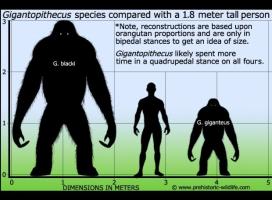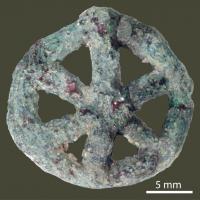Copy Link
Add to Bookmark
Report
EJournal Volume 03 Number 03

_______ _______ __
/ _____/ /__ __/ / /
/ /__ / / ____ __ __ __ ___ __ __ ____ / /
/ ___/ __ / / / __ \ / / / / / //__/ / //_ \ / __ \ / /
/ /____ / /_/ / / /_/ / / /_/ / / / / / / / / /_/ / / /
\_____/ \____/ \____/ \____/ /_/ /_/ /_/ \__/_/ /_/
November, 1993 _EJournal_ Volume 3 Number 3 ISSN 1054-1055
There are 978 lines in this issue.
An Electronic Journal concerned with the
implications of electronic networks and texts.
3135 Subscribers in 37 Countries
University at Albany, State University of New York
EJOURNAL@ALBANY.bitnet
CONTENTS: [This is line 20]
Hypertext for Writers:
A Review of Software [ Begins at line 66 ]
by robin, London, Ontario
Terminology - - - - - [@ l. 113]
Criteria - - - - - - [@ l. 141]
DOS programs - - - - - [@ l. 234]
Windows programs - - - - [@ l. 397]
Macintosh program - - - - [@ l. 543]
Conclusions and Recommendations - [@ l. 645]
[How to send for the 1000-line version of robin's review - @ line 102 ]
Humanities and Arts Initiative: "The Information Superhighway"
An Urgent Request for Endorsement [ Begins at line 754 ]
_EJournal_ Archive at Hanover College [ at line 836 ]
Philosophical Preprints Announcement [ at line 843 ]
Editorial Comment [ at line 867 ]
Supplementing Reviews
Alternative Formats
Information about _EJournal_ - [ Begins at line 898 ]
About Subscriptions and Back Issues
About Supplements to Previous Texts
About _EJournal_
People [ Begins at line 943 ]
Board of Advisors
Consulting Editors
*******************************************************************************
* This electronic publication and its contents are (c) copyright 1993 by *
* _EJournal_. Permission is hereby granted to give away the journal and its *
* contents, but no one may "own" it. Any and all financial interest is hereby*
* assigned to the acknowledged authors of individual texts. This notification*
* must accompany all distribution of _EJournal_. *
*******************************************************************************
<<<<<<<<<<<<<<<<<<<<<<<<<<<<<<<<>>>>>>>>>>>>>>>>>>>>>>>>>>>>>>>>>>>>>>>>>
Hypertext for Writers: A Review of Software [l. 66]
by robin
This is a review of eight hypertext authoring products, followed by
summary recommendations for writers. The review's point of view is
that those of _EJournal_'s readers who might be interested in
preparing hypertexts will be thinking in terms of creating
stand-alone works which can be distributed in much the same way
(and for much the same price) as paper books, journals or
magazines.
I have assumed that potential users are running DOS on an 80286
processor, Windows on an 80386, or Mac systems with at least a
68030. I also assume a 16-bit display, a mouse or similar pointing
device, and 4 MB of RAM. Workstation-hosted software has not been
reviewed because prices and limited availability make workstations
relatively scarce.
In this review I have evaluated the following commercially
available packages. Note that some appear more than once in the
list, because they work on more than one platform.
DOS: Dart, Folio VIEWS, HyperWriter!, Knowledge Pro
Windows: Knowledge Pro, SmarText, Windows Help Compiler, Folio
VIEWS, Hyperwriter!, Guide
Macintosh: Storyspace
I have selected these eight products because of their support for
multiple scrolling windows. A more extensive review, with more
attention to other card-based and hypercard-based packages with
their special purposes and features, is available from _EJournal_'s
FILESERV.
-------------------------------------------------------------------------------
To get that 1000 line version (it reviews these additional products) - [l. 102]
DOS: HyperPad, HyperShell, HyperTies, LinkWay, Orpheus
Windows: FrameMaker, PLUS, ToolBook
Macintosh: FrameMaker, HyperCard, PLUS
- but has NOT been revised since summer, 1993 -
send the *command* GET EJRNL HYPERTXT
to the *address* LISTSERV@ALBANY.bitnet
-------------------------------------------------------------------------------
TERMINOLOGY [l. 113]
For those unfamiliar with some terms, a brief introduction:
"Hypertext" is electronic (digital) "material" composed of "nodes"
(e.g., blocks of text) linked in a non-linear web. When each node
is displayed on the screen, some words may be highlighted to
indicate to the reader that they "yield" to a different node; these
highlighted words are "anchors." By choosing among available
anchors and thus jumping directly from one node to another, readers
create their own paths through the textual network. The
traditional dominance of a single, author-fixed reading is
overturned. Readers shape their own experience of the text not
only at the subjective level of interpretation, but at the
objective level of word-sequences on consecutive pages. The
provision for shared authoring, for links between previously
distinct works, and innovative access methods, all greatly alter
the concept of the book. Issues such as copyright, the canon, and
Barthes' writerly versus readerly text take on renewed
significance.
The following evaluations are based, in different cases, on product
literature, published reviews, demos, working copies, or full
copies of the software. In other words, I have not had extended
experience with a "shipping" version of every system. All prices
are in US dollars (rounded off to the nearest $5) unless otherwise
noted. Contact addresses have been provided so readers can obtain
up-to-date pricing and configuration information.
CRITERIA [l. 141]
My evaluation criteria include linking/ navigation features,
available utilities, ability to customize, ease of use, and price.
Hypertext offers LINKING tools to let writers connect blocks (or
"nodes") of text (or sound or graphics) as they compose, and
NAVIGATION tools to help the people reading it to move around and
know where they are within the composed collection of those blocks.
Writers thinking about buying one of the authoring systems need to
know the composing and reading activities supported by each
product.
REFERENCE links provide the software equivalent of flipping from
page to page in a book. As Conklin has noted, "referential links
are the kind of link that most clearly distinguishes hypertext," as
they allow the creation of non-hierarchical structures (33).
There are also NOTE links, which display only the destination node,
EXPANSION links, which permit branching and collapsing within
hierarchies, and COMMAND links for moving outside the text.
Most hypertext packages provide at least some of the following
navigation tools. Local Map, Global Map, Breadcrumbs, Footprint,
Tour, and History require a brief explanation. (Search, Filter,
Index, and Bookmark, on the other hand, are direct analogues of
paper-oriented tools.)
A map provides a picture of the links and nodes near the current
node, either directly connected (local lap) or in some
neighbourhood (global map). Maps provide context for a reader, and
may help in link selection.
Breadcrumbs provide a visual indicator that a particular node has
been visited, anchor activated, or link traversed. The more often
a node is visited, the more visible the footprint becomes. A tour
is a path through a series of nodes (and links) which may be
replayed at will. The history tool lists those nodes and links
visited on the current path, and allows the reader to return to a
previous location. [l. 181]
The degree to which a hypertext system supports varied navigation
methods is a good indicator of its overall flexibility. But
assessing the extent of "support" is complicated: some hypertext
systems do not automatically provide a tool, but do provide instead
for its construction using simpler elements or a scripting
language.
Windowing systems (as opposed to those which are card- or hypercard
based) provide a rich, event-driven interface which allows for
multiple scrolling windows. Users will be familiar with this
interface from operating systems like Microsoft Windows and Mac
System 7. Such environments let readers compare two pages of text,
write notes while viewing a second page, and so on. I believe that
such activities should be fluidly supported for the benefits of
hypertext to be fully realized. Examples include Dart, Folio
VIEWS, Knowledge Pro, SmarText, StorySpace, and the Windows Help
Compiler.
For many, the price of the authoring package is the first thing
they notice. However, there is a second component of price: the
runtime fee, i. e., the fee that software manufacturers demand for
distribution or for licensing texts produced in or for their systems.
I believe that the authoring packages themselves should be priced
in the same range as good word-processors, and should not cost more
than $1000 with everything included. Runtime fees must be low, or
not required; in order to be competitive, hyperbooks will have to
be priced in the same range as paper books. In any case, people
thinking about buying one of these programs might want to find out
if they are eligible, as an educator, perhaps, for a discount from
list price.
Since authors will be spending a lot of time establishing links, it
is important that linking can be accomplished easily. Furthermore,
great flexibility should be available as to anchor size, anchor
appearance, and link characteristics, because these govern the way
a hyperbook will be perceived.
There are many other utilities which could potentially be of use,
though few are essential: import and export, encryption,
compression, versioning, spell checker and thesaurus, draw and
paint editors, printing, installation tools.
A great deal of customization should be possible without
programming. In particular, a writer should have complete control
over which authoring tools to include in the final hyperbook. A
scripting language could be provided for additional control;
however, writers should not be forced to script to implement basic
functionality.
THE AUTHORING SYSTEMS
FOR DOS ========= [l. 234]
[ x = not supported; + = extra cost; * = recommended configuration
S = sound; V = video; A = animation; D = video disc ]
--------------------------------------------------------------------------------
Product |Dart 2d |Hyperwriter 3.1 |Folio VIEWS 3.0 | KP-DOS
--------------|-------------|-----------------|----------------|----------------
Company |UserWare |Ntergaid |Folio Corp. |Knowledge Garden
Phone |716-425-3463 |203-380-1280 |801-375-3700 |516-246-5400
Price |$30 |$495 |$695 |$195
Platform |80286 |80286 |80386 |80286
OS |DOS 2.1 |DOS 3.0 |DOS 3.0 |DOS
Memory |256 KB |640 KB |512 KB |640 KB*
Graphics card |any |any |any |any
Graphic files |ANSI |PCX, SPR |PCX |PCX + ($180)
Multimedia |x |S,V,A,D |S,V,A |+ ($550)
Runtime |x |reader |viewer |unlimited
Price |free |free |free |$255
--------------------------------------------------------------------------------
***** Dart 2a (DOS)
UserWare's Dart is a shareware program with the unheard-of price of
$30 (including runtime). [The version number as of November is 2d;
ed.] As reviewed, Dart implements a full multiple-window,
scrolling, mouseable interface in DOS text mode. Graphics, other
than ANSI, are not supported. As an editor, Dart works with ASCII
files up to 32,000 lines long. However, none of the usual
facilities of a text editor are present. Even block commands (cut,
copy, paste) and word wrap are missing.
As a viewer, Dart can load both ASCII files and compressed
hypertext files. Features include history, index, table of
contents, print, and on-line help. Only reference links are
supported. Hyperbooks are created by inserting simple markup codes
in the source document. Dart transparently translates these when
viewing the file. A somewhat arcane naming convention is required
for multiple document hyperbooks. Files must be distributed
individually; they are not bound together in any way. The markup
codes support bold and underlined (yellow on a colour monitor)
text, input fields for simple data entry forms, and running
external programs. [l. 276]
There is no reader module. The entire Dart viewer, small though it
is (100 KB), must be distributed to end-users. This is a problem,
as there is no way to turn off menu items which you don't want
readers to access. Performance is excellent, even on low-end
computers.
Rutgers University Press has chosen Dart as their hyperbook
distribution system. This is surprising; my opinion is that Dart
cannot be recommended until a few more features (enhanced editing,
runtime control, file binding) are in place. However, along with
Orpheus and HyperShell [see the longer review essay in the
Fileserv], it is a great example of how to do a lot with a little.
I look forward to the next version.
***** HyperWriter! 3.0 (DOS; Windows version 3.1 now available, but not
reviewed) [Ntergaid: MCI Mail ntergaid ]
The oddly named Ntergaid began their forays into hypertext with the
shareware program Black Magic. This product provides rudimentary
features, and though still available on bulletin boards, is no
longer supported. I focus on its commercial by-product,
HyperWriter!.
HyperWriter! provides support for mixed text and graphics in
display modes up to SVGA. Sound, video, animation, and video disc
media may all be accessed. The support for navigation features is
particularly strong. Boolean searches include proximity qualifiers,
and may be saved to disk. The history list has no limit, and
displays the amount of time spent in each node. Bookmarks may be
named and user preferences saved. Tours and local maps are also
supported.
The writing environment is the best among the DOS products, with
block operations, a spell checker, macros, and full font and style
support. HyperWriter! has developed from a page paradigm to
include scrolling windows. However, the scroll bars look as though
they were a late addition; aesthetically, they do not look one with
the window. In addition, they do not support the mouse, though I
received assurances from the company that this problem had been
fixed for future versions. [Supported in current - 3.1 - version,
according to the company; ed.] [l. 319]
Bi-directional reference, expansion, note, and command links are
supported. Link attributes include name, author, creation date, and
access rights. Best of all is the fact that this plethora of
features is available without scripting. Indeed, HyperWriter! does
not have an extension language.
Customization is available through the Utilities Kit (an additional
$495), which I view as a necessary purchase for serious writing.
With this toolkit, one can develop an install routine, customize
the context-sensitive help, create a hyperbook for CD-ROM, compress
and encrypt data, create new fonts, and customize the anchor
appearance (by colour, symbol, or attribute). Most importantly,
this kit allows the customization of menus; writers can remove
features they don't want readers to use.
ASCII, WordPerfect, and text tagged by Ventura Publisher can all be
imported. An included tool can be used to generate an index. The
separately available AutoLinker ($695) processes batches of files,
automatically creating nodes, links, paragraph tags, and so on.
This impressive tool appears to be comparable to SmarText.
HyperWriter! is one product which deserves its self-congratulatory
exclamation mark. It provides a rich feature set for those who
don't require a full windowing environment. Other than a few
annoying interface quirks, I found little to criticize. Performance
is a bit lacklustre on a 16-bit computer, but this is normal for a
full graphics mode display. The thousand dollars necessary to buy
the Developers' Bundle (HyperWriter! plus the Utilities Kit) is
reasonable when one considers that a royalty-free runtime is
included.
A Windows version with similar features has recently been released;
files are compatible across platforms. I hope that the company will
continue to actively support the DOS version.
***** Folio VIEWS (DOS; Windows version not reviewed) [l. 357]
Folio VIEWS 2.1 is a document indexing and retrieval package for
DOS text mode. In the terminology of this software, nodes are
"folios" and collections of folios are "infobases." An infobase
consists of the original text plus full text indexing. The total
file size is about half that of the original text, due to some
clever file compression.
As one might expect, the searching facility is powerful, supporting
Booleans, wildcards, and proximity criteria. Reference links may be
made to other folios, external programs, PCX graphics, or audio
files in RealSound format. Nodes may be grouped to facilitate
organization. Text editing features include block operations and
highlighting. Over forty file formats may be imported; 2GB of text
may be stored in all. The interface is based on a window paradigm
and supports a mouse. On-line help is available.
A personal edition of Folio VIEWS, which has full functionality but
cannot create new infobases, is $295. An unlimited not-for-profit
runtime license is $1995. This pricing and the limited hypertext
functionality restrict interest in an otherwise capable product. A
Windows version is now available.
***** Knowledge Pro (DOS, Windows)
Knowledge Garden Inc. have designed Knowledge Pro to be a
programmer's toolkit--providing functions for hypertext, list
processing, and interface creation. Two versions exist: KPDOS for
DOS, and KPWin for Microsoft Windows. Though often mentioned
alongside other hypertext products, Knowledge Pro is not for the
casual user. It is certainly easier to build an attractive
application in KPWin than in C, but the process still is suited for
programmers, not writers.
FOR WINDOWS ======== [l. 397]
[ x = not supported; + = extra cost; * = recommended configuration
S = sound; V = video; A = animation; D = video disc
(graphics cards: E = EGA; V = VGA) ]
--------------------------------------------------------------------------------
Product |KP-Win |SmarText 2.0 |WinHelp Compiler |Guide 3.1
-----------------|-----------------|-------------|-----------------|------------
Company |Knowledge Garden |Lotus |Microsoft |Owl
Phone |516-246-5400 |800-831-9679 |n/a |800-344-9737
Price |$ 250 |$ 495 |n/a |$795
Platform |80386* |80386* |80386SX |80386
Operating System |Windows 3.0 |+ Windows 3.0|Windows 3.0 |Windows 3.1
Memory |2 MB* |2 MB* |640 KB (2 MB*) |2 MB
Graphics card |E,V |E,V |E,V |E,V
Graphics files |PCX + ($180) |CGM, PCX, etc|BMP, WMF |PCX & TIFF
Multimedia |+ ($550) |D |+ |V,D
Runtime |unlimited |reader |reader |reader
Price (runtime) |$ 300 |$ 100 to 20 |free |varies
--------------------------------------------------------------------------------
***** SmarText (Windows)
Lotus' SmarText differs from the other products discussed here in
that it is designed to be a central organiser for a group of
heterogenous files, which remain on disk in their native formats.
It can read most common graphic and text files. SmarText analyzes
their structure and builds an outline-based table of contents, an
index, and reference links. Nodes can be searched using storable
queries. Wildcards, Boolean connectives, and proximity criteria are
supported. A Key-Word In Context (KWIC) hit list is presented.
Strangely, this list does not indicate the name of the file in
which the occurrence was found.
Authors are able to increase the accuracy of this process by
specifying words to include (key words) or exclude (stop words)
from the index. Supplementary manual linking is still required, but
SmarText makes this as easy as highlighting the source anchor,
selecting "Create Link" on the menu, and selecting the destination
anchor. Anchors can be either text or graphics, and appear as boxes
or a specified colour. Command links may be used to launch other
applications.
The interface is elegant; much can be done with a simple click of
the mouse. Text fonts can be customized, graphics can be shown at
different scales, an index entry may be expanded to show a KWIC
list, and table of contents entries act as expansion links. Lotus
has included a button bar which provides single-click access to
common functions. Annotations and bookmarks are supported. Up to
3,500 text nodes and 3,500 graphics nodes may be included in a
single book, which may be compiled into a single file for
distribution.
***** Windows Help Compiler (Windows) [l. 451]
Buried within the host of files Microsoft Windows dumps on a hard
drive is a hypertext book reader. The Windows Help engine is a
simple system which allows navigation using links (reference, note,
or command), a simple keyword search, or a default path. Bookmarks
and history are provided. Graphics (BMP, DIB, WMF) may contain
multiple anchors. The interface is that of Windows itself--multiple
scrolling windows.
Microsoft does not spend much time publicizing this system. WinHelp
is designed for use by programmers who wish to add
context-sensitive help to their applications. As such, it is not
sold separately, but instead comes bundled with development
packages (such as Borland C++ and Visual Basic Professional
Edition). It is also available on the Internet.
Building books with the Help Compiler is a multi-stage operation.
A. The text is written in a word processor which supports RTF
files. Each new node must be tagged with footnotes and other
formatting according to proscribed rules. These indicate to the
compiler the node title, keywords, and anchor text. Graphics may
also be added, most efficiently by referencing external files.
B. Macros (actually short command directives) may be added to
customize the menu.
C. The project file is created. This ASCII document lists all of
the RTF files, graphics, and macros which are required to make the
complete book. It also includes specific compiler directives which
may be used to customize the interface.
D. The hyperbook is created by running the Help Compiler from
Windows. This reads the project file, compiles the indicated source
documents together, and makes any specified environment changes.
The result is a help file which may be run from Windows as a
stand-alone book, using WINHELP.EXE.
The advantages of using the Windows help system are obvious. One
can distribute books freely, guarantee that every owner of Windows
can read them, and provide an environment with which the reader
will be immediately familiar. Enough navigation features are
provided for the advantages of the hypertext form to be readily
apparent.
There are some disadvantages. Since the compiler was designed for
creating on-line manuals, it is optimized for hierarchical
structures. The single browse sequence fixes the nodes in a default
linear path. (It is possible to omit the Browse buttons if this
emphasis is not desired.) Several menu labels assume that the
contents of the hyperbook will in fact be a help file and not some
other form of electronic document. In addition, the lack of any
sort of map, and the keyword-only search mechanism, favours
help-type systems.
***** Guide (Windows) [l.508]
Guide was first developed by Peter Brown at the University of Kent
in 1982. Version 3.05 is a single-user document hypertext, with
support for PCX and TIFF graphics, video, video disc, and external
pointers. Multiple document Boolean search and a 32-item history
are the only available navigation features. All four link classes
are supported; anchors are represented by italic (reference,
command), bold (note), and underline (expansion) text. The anchor
appearance may be changed, but only to other typographic styles. I
consider these choices to be unfortunate. However, a nice feature
is the fact that the mouse pointer changes shape when over an
anchor.
Links may be created without scripting, though a simple Pascal
clone (Logiix) is provided. Dynamic Data Exchange is supported.
ASCII and RTF files may be imported and exported. An additional
utility, G-Convert, converts Mac to PC hyperbooks.
Guide ships with a viewer which may be distributed free of charge.
However, the viewer does not support bookmarks, annotations,
search, or most of the other functions of the reader. Guide
readers must be purchased individually at prices which start at $95
each (for fewer than ten). This makes low-volume distribution on
a par with book publishing unfeasible. For larger volumes, pricing
is more reasonable. For instance, if one is purchasing between
1000 and 5000 copies, each reader is $19.50.
Guide is very user-friendly. In case of difficulties, most of the
300-page manual is on-line. Unfortunately, it is no longer
available for the Mac; previously its cross-platform compatibility
was one of its best features. Guide is recommended if the minimal
features of the viewer suit your purposes, or if you can afford the
reader fees.
FOR MACINTOSH =============== [l. 543]
[ x = not supported; + = extra cost; * = recommended configuration
S = sound; V = video; A = animation; D = video disc ]
---------------------------------------------|
Product | Storyspace |
--------------------------------------------|
Company | Eastgate Systems |
Phone | 800-562-1638 |
Price | $ 215 |
Platform | Plus |
Operating System | System 6.0 |
Memory | 1 MB |
Graphics card | any |
Graphics files | PNT |
Multimedia | S,V |
Runtime | runtime |
Price (runtime) | free |
----------------------------------------------
***** Storyspace (Macintosh)
[ Eastgate Systems: eastgate@world.std.com ]
Storyspace is a hypertext system for the Macintosh which has been
designed specifically for writers by writers (Jay David Bolter,
John B. Smith, Michael Joyce, and Mark Bernstein), all of whom are
active in research. Storyspace follows Bolter's terminology in
calling nodes "writing spaces." These are displayed as scrollable
windows on a desktop which includes the usual Mac pull-down menus
and a toolbar. Writing spaces may contain text, graphics, sound, or
video. They also act as containers for other writing spaces.
Text-editing features are unfortunately minimal. While font control
is simple, paragraph and style formatting are not available.
Writing spaces may be viewed in one of three configurations, as a
global map, an outline, or a horizontal flow chart. A magnification
tool allows zooming in on areas of particular interest. Navigation
is as easy as point and click. Links may be made by highlighting
the anchor text, dragging the mouse to the destination node, and
typing a label. Anchors (which appear as boxed text) may be made
visible momentarily through a simple key combination. Though only
reference links are available, a note tool automates annotation by
combining the few steps that would otherwise be made manually. [l. 587]
A local map is provided through the Roadmap menu item. Paths may
be named and saved, though there is no provision for automated
tours. If there is more than one link from a node, priorities may
be assigned to them by using "guard fields." These allow writers
to embed an intelligence in their hyperbooks without having to use
a scripting language. Access to links can be made dependent on
whether a reader has previously visited a given writing space, or
selected a specific anchor. Boolean connectives are provided.
Writing spaces may hold only 32,000 characters. This is sufficient
for most purposes, but is a limitation when importing from existing
works. Storyspace splits files into separate nodes every 25,000
bytes; these must then be manually edited to the desired length.
Storyspace uses XTND translaters to read and write external file
formats and is packaged with one for MacWrite.
Many other useful features are provided. Extensive printing options
are available. A user's environment preferences may be saved.
Storyspace books may be converted to HyperCard stacks. Keywords may
be assigned to writing spaces. Several visual window types are
possible. A path-builder allows the user to query writing spaces
for certain conditions. In effect, this combines a tool for
automatic linking with a query facility.
The documentation consists of a tutorial-style manual titled
"Getting Started with Storyspace." From this, one would assume that
a more extensive reference manual would also be included, but this
is not the case. Some features, such as support for video and
external devices, go completely unexplained. Thankfully, telephone
support is excellent; Bernstein himself often answers the calls.
Works written in Storyspace may be packaged for distribution using
one of three readers: Storyspace, Page, or Easy. Each offers
readers a different view of the hyperbook, and lets them navigate
with different tools. The author's selection of Readers will govern
how their hyperbook will be perceived. In particular, the
Storyspace Reader allows access to the global map; this reveals the
internal structure of the work for inspection and free navigation.
Some of Storyspace's navigation tools are counter-intuitive. In
particular, the rosette does not allow navigation as its compass
form would imply, ie: north, south, east, west to adjacent nodes in
the same plane. Rather, it combines planar movement with motion in
depth. I find this confusing. Also, some interface elements are
remnants of earlier versions, and should be removed (eg. the text
entry region).
Many hyperbooks are available in Storyspace, due, no doubt, to its
profile in the academic community. These include Joyce's seminal
_Afternoon, a story_, Guyer and Petry's _Izme Pass_, and Bolter's
_Writing Space_.
A Storyspace-Windows converter (for reading - not a full authoring
system) is available for $75.
CONCLUSIONS AND RECOMMENDATIONS ============ [l. 645]
Of course it is not possible to recommend just one of these
eight hypertext packages for all uses. Yet it is surprisingly
easy to narrow the field considerably.
HyperWriter! is the definite winner amongst those programs which do
not fully support windows. For $1000, this program will do almost
anything you want, though it does lack even simple decision-making
ability.
I did not expect to seriously consider Knowledge Pro, Folio VIEWS,
SmarText, or the Windows Help Compiler as authoring systems.
However, SmarText surprised with its ability to automate tedious
work and make stand-alone hyperbooks. Limiting factors include the
reader price and lack of any method to embed intelligence. The
Windows Help Compiler has a lot going for it, and deserves a look
by any serious hypertext author. Finally, Storyspace can be
recommended for its reasonable price, breadth of features, and
overall interface. While certain design decisions are irritating
and the lack of text formatting features is a disappointment, it is
easy to see why this package is popular among writers.
The term "hypertext" has been interpreted loosely by many
application developers and reviewers. Support for truly nonlinear
writing and reading is found in few products. Distributed and
multi-author texts are not possible. The traditional wall between
writer and reader is barely scratched. This survey reveals that the
theory and practice of hypertext, at least at a consumer level, are
distinct.
These products will improve; as users become more demanding,
features from research systems such as Intermedia and NoteCards
will become commonplace on the desktop. Until that time, there is
more than enough here to satisfy writers restricted by the printed
book, eager to break the spine and free the leaves within.
SOME PERTINENT PUBLICATIONS - (This is the full list that accompanies the
long version of the review. See line xxx.)
ACM. _Communications of the ACM_ July 1988. Computer software. New York:
ACM, 1988. DOS 3.1, 540KB RAM.
Bernstein, M. "The Bookmark and the Compass: Orientation Tools for
Hypertext Users." _ACM SIGOIS Bulletin_ 9.4 (October 1988): 34-45.
Bolter, Jay David. _Writing Space: The Computer, Hypertext, and the History
of Writing_. Hillsdale, NJ: Lawrence Erlbaum, 1991.
---. _Writing Space_. Computer Software. Watertown MA: Eastgate Systems,
1990. Macintosh Plus, System 6.0, 2MB RAM.
Conklin, E. Jeffery. "Hypertext: An Introduction and Survey." _IEEE
Computer_ 20 (September 1987): 17-41.
Delany, Paul and George P. Landow, eds. _Hypermedia and Literary Studies_.
Cambridge: The MIT Press, 1991.
Gess, Richard ed. _Perforations 1.3_ (Spring/Summer 1992). _After the Book:
Writing Literature Writing Technology_. Atlanta: Public Domain, 1992.
Guyer, Carolyn and Martha Petry. _Izme Pass_. Computer software. Writing on
the Edge 2.2 (Spring 1991). Macintosh Plus, System 6.0, 2MB RAM.
Joyce, Michael. _Afternoon, a story_. Computer software. Jackson, MI:
Riverrun Limited, 1989. Macintosh Plus, System 6.0, 2MB RAM.
Landow, George P. _Hypertext: The Convergence of Contemporary Critical
Theory and Technology_. London: Johns Hopkins UP, 1992.
---. "The Rhetoric of Hypermedia: Some Rules for Authors." _Journal of
Computing in Higher Education_ 1 (1989): 39-64. Rpt. in Delany and Landow.
81-103.
Moulthrop, Stuart. "Dreamtime." Vers. 3.1. Computer software. Macintosh
Plus, System 6.0, HyperCard 1.2.5. In Gess, Perforations.
Nelson, Ted. _Literary Machines_. Swarthmore, PA: Self-published, 1981.
Nielson, Jakob. "The Art of Navigating through Hypertext." _Communications
of the ACM_ 33 (March 1990): 296-310.
---. _Hypertext and Hypermedia_. San Diego: Academic Press, 1990.
Schneiderman, Ben and Greg Kearsley. _Hypertext Hands-on!_. Reading, MA:
Addison-Wesley, 1989.
Stepno, Bob. "A HyperCard for the PC." _Byte_ (September 1989). 189-192.
Willmot, Rod. _Everglade_. Computer software. Sherbrooke PQ: Hyperion
Softword, 1990. 80286 processor.
-----------------------------------------------------------------------------
by robin
3 Westcott Upper
London, Ontario, Canada
N6C 3G6 42131_4001.uwovax.uwo.ca
This review is one product of the research project _Hypertext Fiction and
the Literary Artist_ by C. J. Keep, Tim McLaughlin and robin, a project
made possible through the assistance of the Canada Council.
==============================================================================
| This review in Volume 3 Number 3 of _EJournal_ (November, 1993) is (c)
| copyright _EJournal_. Permission is hereby granted to give it away.
| _EJournal_ hereby assigns any and all financial interest to robin. This
| notice must accompany all copies of this text.
===============================================================================
HUMANITIES AND ARTS INITIATIVE: THE INFORMATION SUPERHIGHWAY [l. 754]
There's a sense of urgency, almost crisis, about this situation. We ask
that you write _EJournal_ to endorse the statement that follows this brief
excerpt from a message we received on 20 November 1993 from Michael Joyce:
"[I] recently participate[d] in an ad-hoc meeting in Washington, D.C.
regarding Arts and Humanities computing and the NII, co-hosted
by the (ARL, CAUSE and Educom sponsored) Coalition for
Networked Information and the Getty Foundation. The meeting
involved some twenty participants including presidents or
directors of a wide range of humanities organizations,
information industry and publishing organizations as well as
officials of NEA, NEH, and NSF. Meeting co-chair Charles
Henry, Director of Vassar College Library, set the tone for
the meeting by noting that `more space is devoted in the NII
prospectus to discuss automating heating of federal buildings
than to arts and humanities computing.' . . . . . . .
"The meeting ended with a consensus on the need to define a
rubric for humanities and the arts in NII; to collect data on
computing in the humanities and the arts to support
congressional lobbying; and to form alliances with identified
stake-holders in these efforts. A preliminary crisis
statement drafted by a steering committee will be presented
to congress and the administration, and widely publicized. . . . "
--- --- --- --- --- --- --- --- --- --- --- ---
[Here is the Statement itself, the one we are asking you to "sign"]
A NATIONAL INITIATIVE FOR HUMANITIES AND ARTS COMPUTING [l. 783]
The absence of the humanities and arts in the development of
a national information infrastructure ignores the value of
the American people's cultural heritage, and the network as a
medium of creativity and learning, in the crucial formation
of technology policy.
The members of the Task Force on a National Initiative for
Humanities and Arts Computing endorse the principle that
humanities and arts voices are critical--indeed equal to the
recognized interests of the sciences--in the balanced
development of the nation's technological infrastructure.
Reinstating the humanities and arts in the dialog shaping
this public policy is of utmost urgency. We call for the
reintroduction of the humanities and arts in the formation of
such policy.
Goals agreed upon by the Task Force to be facilitated by a
steering committee:
1. Define a rubric that articulates the value of humanities
and arts computing for a democratic society.
2. Build a profile of humanities and arts computing using
data that identifies the breadth and vitality, as well as the
needs, of technology in these fields.
3. Form alliances with identified stakeholders in order to
more programmatically engage in national policy development
and planning.
by the ad-hoc steering committee:
Charles Henry Susan Siegfried
Coalition for Networked Information Research Projects Manager
Director of the Libraries The Getty Art History
Vassar College Information Program
Stanley Katz Marilyn Schmitt
President Program Manager
American Council of The Getty Art History
Learned Societies Information Program
--- --- --- --- --- --- --- --- --- --- --- --- ---
If you want your name to be among those who have "signed" in support of these
principles, please send a message approximating "I support the ad-hoc committee
on the National Inititative ....." Send it to our mailbox, please -
EJOURNAL@ALBANY.bitnet
**not** by return e-mail to our Listserv. We will see that it is forwarded.
Thanks.
===============================================================================
FTP ARCHIVING AT HANOVER COLLEGE [l. 836]
Thanks to Hanover College and editor John Ahrens, back issues of _EJournal_
can be retrieved from /pub/ejournal at ftp.hanover.edu . The files
INFO and CONTENTS, and issues V1N1 through V3N1, are there as of this writing.
================================================================================
ANNOUNCEMENT [l. 843]
The International Philosophical Preprint Exchange is a new
service on the Internet designed to foster improved communication
among philosophers by providing a medium for the exchange of
works in progress. We invite all interested philosophers to
browse our collection of working papers in all areas of
philosophy, and to submit their own working papers. To receive
instructions, send a piece of email containing exactly the
following four lines of text:
begin
index
send getting-started
end
to the address
phil-preprints-service@phil-preprints.l.chiba-u.ac.jp.
A user's guide and a list of papers available will be returned to you
by email.
================================================================================
EDITORIAL COMMENT [l. 867]
Hypertext looks like the medium of the future for "serious"
writers, whoever they are, and _EJournal_ is pleased to offer an
early comparison-and-contrast view of authoring programs that
writers can experiment with. Confirmations, clarifications or
qualifications of robin's assessments can be passed along to
_EJournal_'s readers quite quickly. To be sure, we will be more
interested in testimony that writers send us, whether enthusiastic
or disappointed, than in product promotion, but we will try to err
in the direction of inclusiveness. And here's a reminder: a
longer review essay, including discussions of non-windowing products,
is available from _EJournal_'s Fileserv (see line 102 of this issue).
Following July's experimental "HtxtRdr" issue, we had several
generous offers of help for laying out _EJournal_ in alternative
formats --especially World Wide Web and Windows Help. Our
enthusiasm for such experiments has been tempered, however, by the
reality of limited resources; facing an either-or choice, it seems
more important to look for and distribute worthy essays in this
simplest ASCII form than to deflect energy into alternative
formatting --no matter how consistent with _EJournal_'s long-range
purposes those formats may be. But the time will come, and we
would be delighted in the meantime to have anyone grab an issue and
re-format it and re-distribute it. We make a point of not "owning"
our texts, and ask only for proper acknowledgment.
-----------------------------------------------------------------
------------------------ I N F O R M A T I O N --------------------
-------------------------------------------------------------------------
------------------------------------------------------------------------------
About Subscribing and Sending for Back Issues: [l. 898]
In order to: Send to: This message:
Subscribe to _EJournal_: LISTSERV@ALBANY.bitnet SUB EJRNL Your Name
Get Contents/Abstracts
of previous issues: LISTSERV@ALBANY.bitnet GET EJRNL CONTENTS
Get Volume 1 Number 1: LISTSERV@ALBANY.bitnet GET EJRNL V1N1
Send mail to our "office": EJOURNAL@ALBANY.bitnet Your message...
-------------------------------------------------------------------------------
About "Supplements":
_EJournal_ is experimenting with ways of revising, responding to, reworking, or
even retracting the texts we publish. Authors who want to address a subject
already broached --by others or by themselves-- may send texts for us to
consider publishing as a Supplement issue. Proposed supplements will not go
through as thorough an editorial review process as the essays they annotate.
-------------------------------------------------------------------------------
About _EJournal_:
_EJournal_ is an all-electronic, e-mail delivered, peer-reviewed,
academic periodical. We are particularly interested in theory and
practice surrounding the creation, transmission, storage,
interpretation, alteration and replication of electronic "text" -
broadly defined. We are also interested in the broader social,
psychological, literary, economic and pedagogical implications of
computer- mediated networks. The journal's essays are delivered
free to Bitnet/ Internet/ Usenet addressees. Recipients may make
paper copies; _EJournal_ will provide authenticated paper copy from
our read-only archive for use by academic deans or others.
Writers who think their texts might be appreciated by _EJournal_'s audience are
invited to forward files to EJOURNAL@ALBANY.bitnet . If you are wondering
about starting to write a piece for to us, feel free to ask if it sounds
appropriate. There are no "styling" guidelines; we try to be a little more
direct and lively than many paper publications, and considerably less hasty and
ephemeral than most postings to unreviewed electronic spaces. Essays in the
vicinity of 5000 words fit our format well. We read ASCII; we look forward to
experimenting with other transmission and display formats and protocols.
[l. 941]
-------------------------------------------------------------------------------
Board of Advisors:
Stevan Harnad Princeton University
Dick Lanham University of California at L. A.
Ann Okerson Association of Research Libraries
Joe Raben City University of New York
Bob Scholes Brown University
Harry Whitaker University of Quebec at Montreal
-------------------------------------------------------------------------------
Consulting Editors - November, 1993
ahrens@alpha.hanover.bitnet John Ahrens Hanover
ap01@liverpool.ac.uk Stephen Clark Liverpool
dabrent@acs.ucalgary.ca Doug Brent Calgary
djb85@albany Don Byrd Albany
donaldson@loyvax Randall Donaldson Loyola College
ds001451@ndsuvm1 Ray Wheeler North Dakota
erdtt@pucal Terry Erdt Purdue-Calumet
fac_askahn@vax1.acs.jmu.edu Arnie Kahn James Madison
folger@watson.ibm.com Davis Foulger IBM - Watson Center
george@gacvax1 G. N. Georgacarakos Gustavus Adolphus
gms@psuvm Gerry Santoro Penn State
nrcgsh@ritvax Norm Coombs RIT
pmsgsl@ritvax Patrick M. Scanlon RIT
r0731@csuohio Nelson Pole Cleveland State
richardj@bond.edu.au Joanna Richardson Bond
ryle@urvax Martin Ryle Richmond
twbatson@gallua Trent Batson Gallaudet
userlcbk@umichum Bill Condon Michigan
wcooper@vm.ucs.ualberta.ca Wes Cooper Alberta
-------------------------------------------------------------------------------
Editor: Ted Jennings, English, University at Albany
Editorial Asssociate: Jerry Hanley, emeritus, University at Albany
-------------------------------------------------------------------------------
University at Albany Computing Services Center: Ben Chi, Director
-------------------------------------------------------------------------------
University at Albany State University of New York Albany, NY 12222 USA























